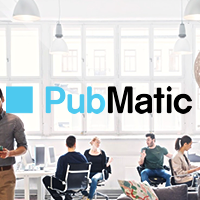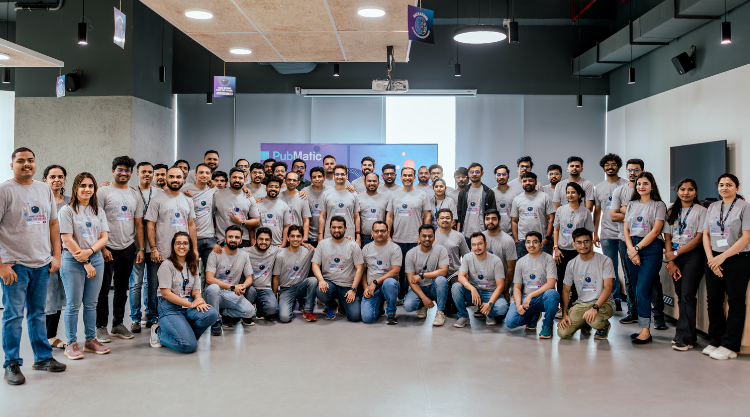If you’re not familiar with the popular icebreaker game “Two Truths and a Lie” here’s how it works: each person within a group of relative strangers introduces himself and then proceeds to provide the group with three statements about himself. Two of the statements are true and one is a lie. The rest of the group then tries to guess which of the statements is the lie.
We recently asked Graham Mosley, Senior Director, Native at PubMatic to play Two Truths and a Lie. However, instead of focusing our game on statements about Graham, we decided to focus this round on his area of knowledge expertise, native advertising. We thought it would be a fun way to examine this topic.
Over the past 12-16 months, there has been a lot of attention on native advertising among publishers and advertisers. There’s even some uncertainty over exactly what constitutes a native ad and what function they serve. A December 2013 Interactive Advertising Bureau (IAB) report (link) attempted to sum up native with the statement: “it is clear that most advertisers and publishers aspire to deliver paid ads that are so cohesive with the page content, assimilated into the design, and consistent with the platform behavior that the viewer simply feels that they belong.”
Graham sees a lot momentum in the market around native but also a lot of confusion.
Here is Two Truths and a Lie for Native
Statement #1: There’s now a programmatic standard for native ads that will make it easier for both publishers and buyers to scale native.
Statement #2: Like the rest of the programmatic advertising ecosystem, native is expanding from a strong initial presence on desktop into mobile inventory.
Statement #3: Native is an ad format that’s often used for content marketing, but native is not just a new name for content marketing.
Before we reveal the lie, we wanted to point out that a key reason native has soared in popularity since that IAB report is because these types of ads are remarkably effective at driving consumer engagement.
Some data on consumer engagement:
- Native ads are 25% more viewable than standard ads (IPG Media Lab and Sharethrough)
- 52% of native clicks have higher purchase rate (IPG Media Lab and Sharethrough)
- Native ads generate 82% increase in brand lift (Nielson)
And Now . . . The Reveal
Statement #1: There’s now a programmatic standard for native ads that will make it easier for both publishers and buyers to scale native
True. There’s a relatively new programmatic IAB standard, which is designed to make it easier for publishers and buyers to scale native ads across the advertising ecosystem.
Graham Mosley: Until recently, native primarily lived inside walled gardens – especially social platforms – where a few players with scale could make the rules about how native worked within their closed environments. I believe we’re at the point where native is ready to go mainstream. The industry wants to see a large number of buyers and sellers transacting across an open and accessible environment. When the IAB recognized the need for a standard, it was a clear signal that native was poised for enormous growth. We were an integral part of the IAB Task Force that developed the standard, and built our solution from the ground up in accordance with this standard. Now that the rules of the road are in place, native programmatic can finally scale.
Another key reason we think that native is ready to scale in programmatic is that it will provide native buyers with actionable third party data. When native was primarily constrained to a closed environment, it didn’t provide the data to allow the buyer to make real-time decisions. That lack of real-time decision-making prevented key marketing techniques like creative optimization that is designed to better match the user experience or even the sequencing of messages. That ability is only available in programmatic, which is why we believe programmatic and native are a great fit.
Statement #2: Like the rest of the programmatic advertising ecosystem, native is expanding from a strong initial presence on desktop into mobile inventory.
False. To a significant degree, the momentum we’re now seeing behind native advertising began in mobile, and because native is fundamentally cross-platform, it is now extending to all screens.
GM: We are starting to see programmatic native, which was very much mobile focused, entering desktop as well. Part of the reason it’s been so mobile focused is because the components of native often fit perfectly into the visual snippets that work well within the mobile form factor. However, this way of displaying ad content is being adopted by premium publishers at scale. And buyers are getting serious about buying native programmatically on desktop. This year we will begin to see real spend by programmatic buyers on desktop native. So in a sense, native is doing the reverse of what we have seen in other parts of the programmatic advertising landscape, where things started in desktop and then migrated to mobile.
Statement #3: Native is an ad format that’s often used for content marketing, but native is not just a new name for content marketing.
True. Native is an ad format often used for content marketing.
GM: Some people believe strongly that in-feed native is a tool only for content marketing.
Content marketing is when brands create and distribute content to provide value and create a relationship with the consumer. The in-feed native unit is natural ad format to drive users to this content, because it gives the marketer a better opportunity to tell a story than a standard banner ad. Additionally, these placements normally blend into the user experience on a style level and matching the context. However, many marketers are also using in-feed native units for more traditional advertising.
At its core, native is another advertising format. While it is the best ad format for content marketing, it will be used for standard advertising as well. We continue to see premium publishers develop integrated content marketing solutions for advertisers that include in-feed native ad units. Now that we have turned the corner on standards, Native will grow significantly this year and into 2016, supporting all types of marketing.
—
PubMatic launched its new programmatic native advertising solution at Mobile World Congress 2015 in Barcelona. For more information see here.




